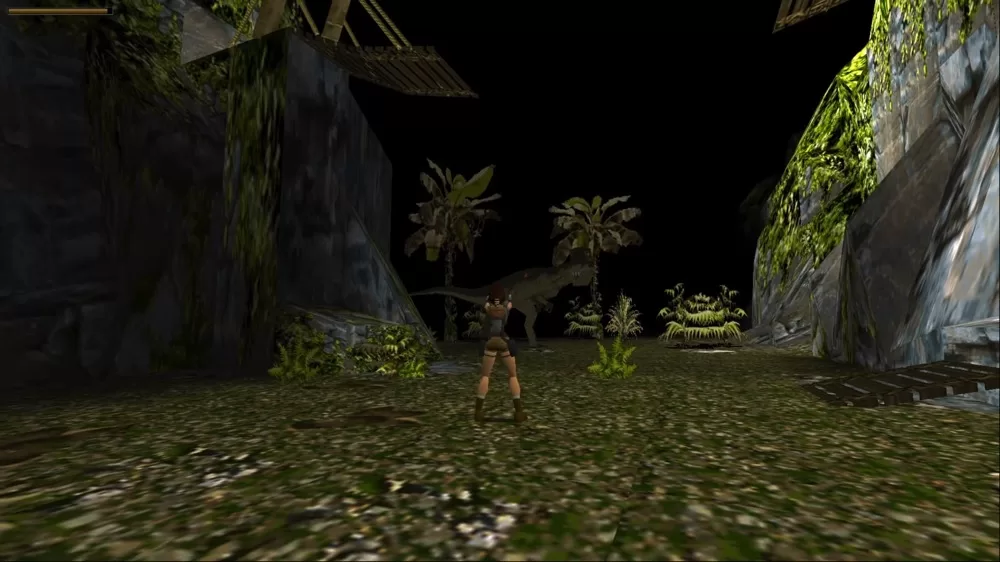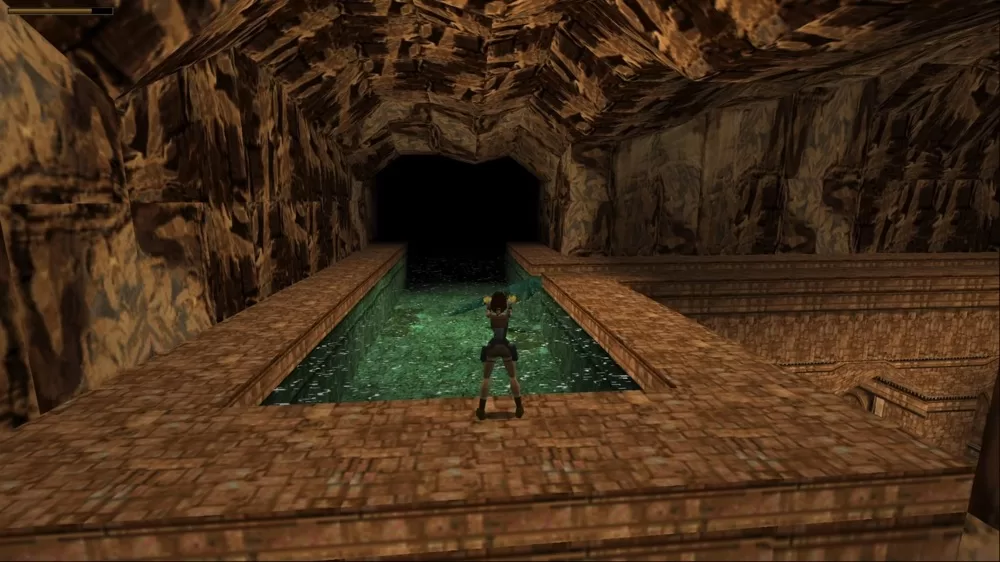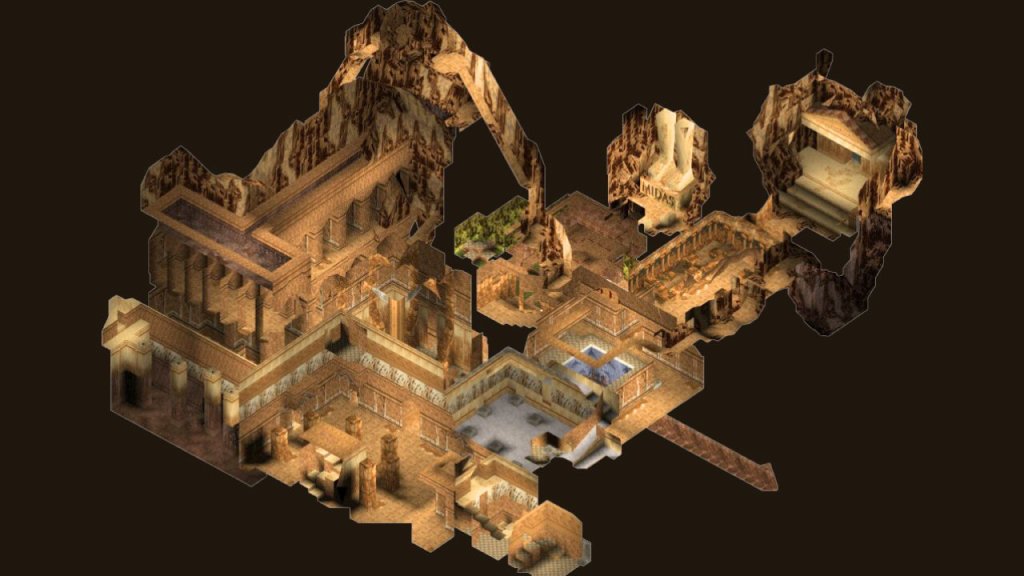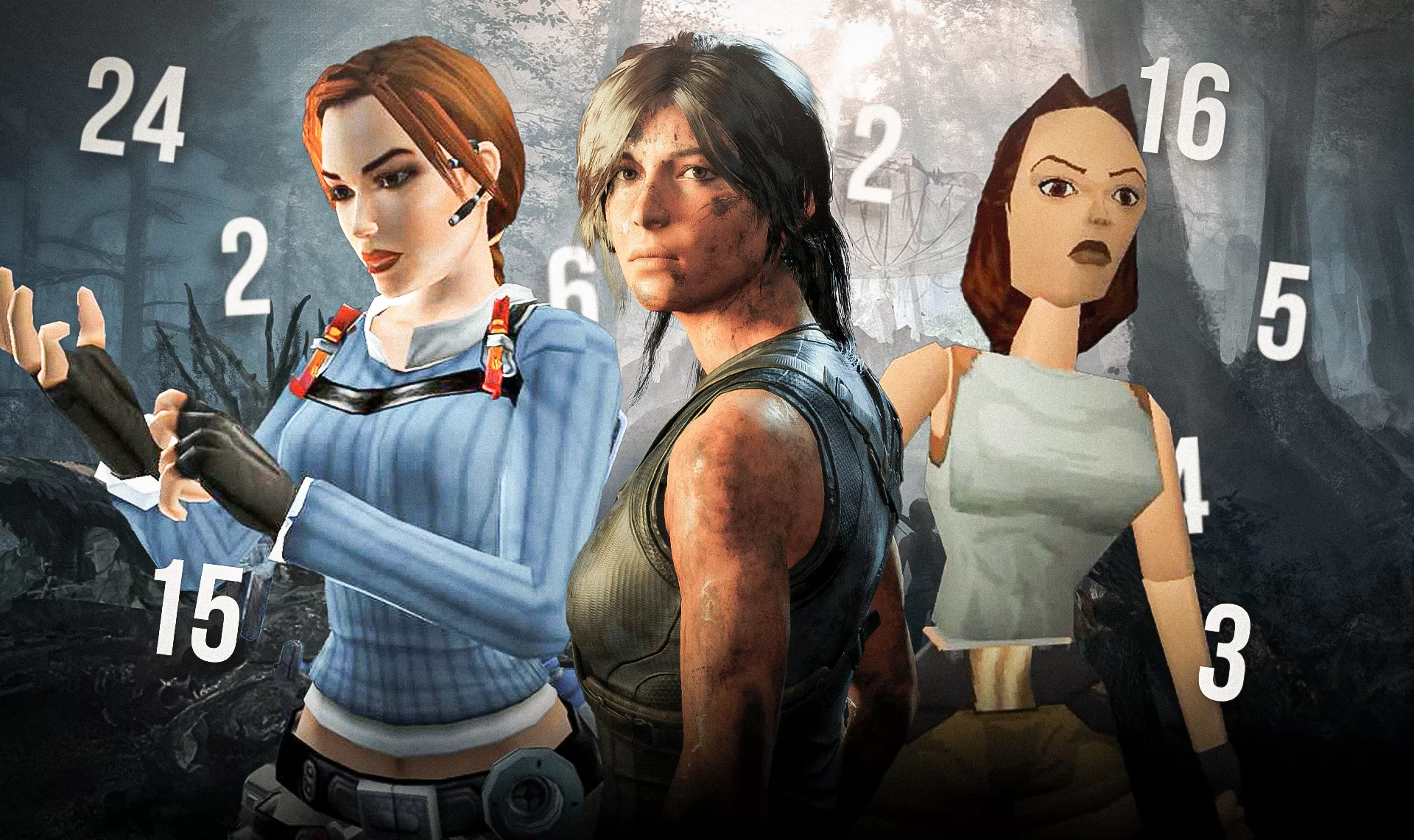On October 25, 1996, Tomb Raider made its grand debut on the Sega Saturn, and left a mark that has helped shape the gaming industry ever since. The groundbreaking action-adventure game, developed by Core Design and published by Eidos Interactive, introduced a new dimension to gaming, featuring revolutionary 3D graphics, a strong female lead, and gameplay that combines combat, puzzle-solving, and exploration.
At the time, the most popular video games were two-dimensional side-scrolling adventures starring everyone’s favorite pixelated plumbers, Mario and Luigi, and their friends, including Yoshi, Donkey Kong, and Diddy Kong. Mortal Kombat and its increasingly bloody entries were becoming a cultural phenomenon, much to the chagrin of parents. But for the next several years, it was Tomb Raider and its protagonist Lara Croft, who would steal the spotlight.
On the Tomb Raider 27th anniversary, with its first official remaster set to debut in early 2024, let’s look back at the game that defined a generation.
The Birth of ‘Tomb Raider’

Developed by a tiny team in the small town of Derby, England, Tomb Raider is now a globally recognized brand. Its main protagonist, Lara Croft, is among the world’s most famous video game characters. She reached the pinnacle of her popularity in the late 1990s and early 2000s as “girl power” mania, led by British import The Spice Girls, swept the globe, leading to calls for more strong and independent female characters across all mediums.
Only six people built the game that would send shock waves through the entertainment world. It all began with Core Design developer Toby Gard, who proposed the original concept to company head Jeremy Heath-Smith in 1994. Aiming for a debut on the upcoming PlayStation console, the small team sought to create a game that blended the adventure of games like Ultima Underworld and Prince of Persia, with 3D characters like those in Virtua Fighter.
Initially, the game was designed around a male lead who bore a strong resemblance to another swashbuckling hero, Indiana Jones. But after considering the legal ramifications and steering the development in a more unique direction, the character developed into a South American female adventurer named Laura Cruz. Over time, the concept morphed into a British aristocrat, and she was rebranded as Lara Croft after Eidos executives balked at her original name.
The Development of ‘Tomb Raider’

Tomb Raider’s development process was a challenge for the team in Derby. It required the creation of a custom-built game engine and a grid-based level design system designed by Gavin Rummery. This allowed for the creation of intricate, multi-layered environments and platforming, a first in the gaming world at the time. The team’s dedication and innovative approach led to the creation of a game that was unlike anything else available in the mid-1990s.
It is among the first games to feature a fully 3D environment that players can explore freely. The game’s design allowed Lara to interact with the environment in complex ways, from scaling walls and shimmying along ledges to flipping switches and swimming through bodies of water.
The game is divided into four sections: Peru, Greece, Egypt, and the lost continent of Atlantis, each with its own unique architectural and historical influences. This geographical diversity, combined with the game’s cinematic presentation, gave players a sense of immersion and a feeling of being part of a grand adventure.
What Made ‘Tomb Raider’ so Special?

Tomb Raider is unlike most other adventure games in that it doesn’t rely on near-constant action to hook its players. Tomb Raider is a quieter, more cerebral game that invites gamers to slow their pace and take care of how they explore its complex environments. In its opening level, “Caves,” the game teaches players to explore every nook and cranny because if they do, they might find useful pickups hidden off the main path.
Tomb Raider eschewed the trend of having music play on a never-ending loop. The game is purposely quiet, with only Lara’s footfalls and occasional grunts piercing the silence. Chilling, echo-y ambient tracks, just barely audible, complement the deliberately empty and desolate settings.
Together, they create a feeling of general unease, that something isn’t quite right here. That danger could lurk around every corner. Ninety percent of the time, there’s nothing there except Lara. But the game masterfully builds tension to the point where you know something nasty must await you in the next chamber or corridor. Except there isn’t. And that’s what makes the scares so jarring when they do occur, often accompanied by dramatic musical cues that signal to the player that danger is imminent.
Sometimes enemies (I’m looking at you, mummies in Egypt) leap out at Lara with no warning. But other times, the developers take advantage of the game’s eerie silence and allow the player to hear guttural growls or thumping footfalls coming from somewhere up ahead long before you see what’s causing them. It’s pulse-pounding suspense building at its finest and gives credence to the idea that Tomb Raider is a survival-horror game at its core.
Game Mechanics of ‘Tomb Raider’

Tomb Raider seamlessly blends exploration and puzzle-solving with occasional combat and traps. Players guide Lara through a series of tombs and other locations, solving intricate puzzles and battling enemies to progress through the game. Lara’s goal is to retrieve three pieces of a legendary Atlantean artifact called the Scion, hidden in remote parts of the world.
The game’s control system, now seen as outdated and cumbersome, was innovative in 1996. Lara controls via the D-pad, and unlike modern games, she does not move in relation to the camera’s position.
The grid system, another relic of the past, allows for precise moments that teach the player how Lara can move, which areas can be reached, and how far Lara can leap. Precision and full interaction is needed from the player.
If Lara needs to grab a ledge, you have to press a button to make her do so. If you let go of the button while Lara hangs from the edge, she falls. If you don’t line up a jump perfectly, Lara will miss, often sending her to a punishing death. There are no hints or safety nets. This game is clear: you are directly responsible for Lara’s failures. But when Lara succeeds, that’s your doing as well. Success in Tomb Raider requires players to learn from their mistakes and utilize the skills the game teaches them.
Combat in Tomb Raider is rudimentary and simplistic. Lara points her guns at anything she doesn’t like the look of, removing the need for the player to aim. Then, the player fires lead into the enemy until they drop, while utilizing Lara’s arsenal of backflips and sideways jumps. It’s one of the game’s weaker elements, but it works for a game that isn’t focused on combat.
‘Tomb Raider’s’ Level Design

Arguably the element Tomb Raider is praised for the most is its level design. Sometimes simple and linear, like Caves, and other times intricate and labyrinthine like Greece’s Palace Midas, Tomb Raider’s level design is arguably its strongest pillar.
Tomb Raider’s levels have a tendency to branch out and spiral around themselves. Locations you’ll visit later are teased through windows and impenetrable barriers. In other instances, you’ll visit locations only to revisit them once you’ve found the key item needed to make forward progress.
Sometimes, you’ll find yourself high above or far below locations you’ve already visited, which adds to the player’s sense of discovery while showcasing the twisting, winding nature of its subterranean tombs and lost cities.
Reception and Impact

Upon its release, Tomb Raider was met with widespread acclaim, with critics praising its innovative 3D graphics, intricate level design, and the character of Lara Croft. The game went on to win numerous industry awards and became one of the best-selling PlayStation games after its release on the platform in November 1996.
More importantly, Tomb Raider left a lasting impact on the gaming industry. It set a new standard for 3D action-adventure games and demonstrated the potential for video games as a form of immersive, interactive storytelling.
The game and its sequels influenced other popular game franchises, including Uncharted, Indiana Jones, and Prince of Persia. The game’s success also paved the way for numerous sequels and spin-offs, solidifying Tomb Raider as a landmark franchise in the gaming world.
A Lasting Legacy To Be Remembered on the ‘Tomb Raider’ 27th Anniversary

Looking back, Tomb Raider was a game ahead of its time. Its innovative design, captivating narrative, and groundbreaking protagonist set it apart from other games of its era and established it as a classic in the gaming world.
Fans will soon be able to play a remastered version of the original Tomb Raider and its first two sequels, with the thirteenth mainline game in the series currently in development. The series has evolved a lot since its debut in 1996, but as we look forward to the future of the franchise, we can’t help but appreciate the game that built the foundation on which it stands.
What memories do you have of the original Tomb Raider game? Are you looking forward to the upcoming remasters? Let us know in the comments below, or hit us up on the Agents of Fandom socials to join the conversation!











